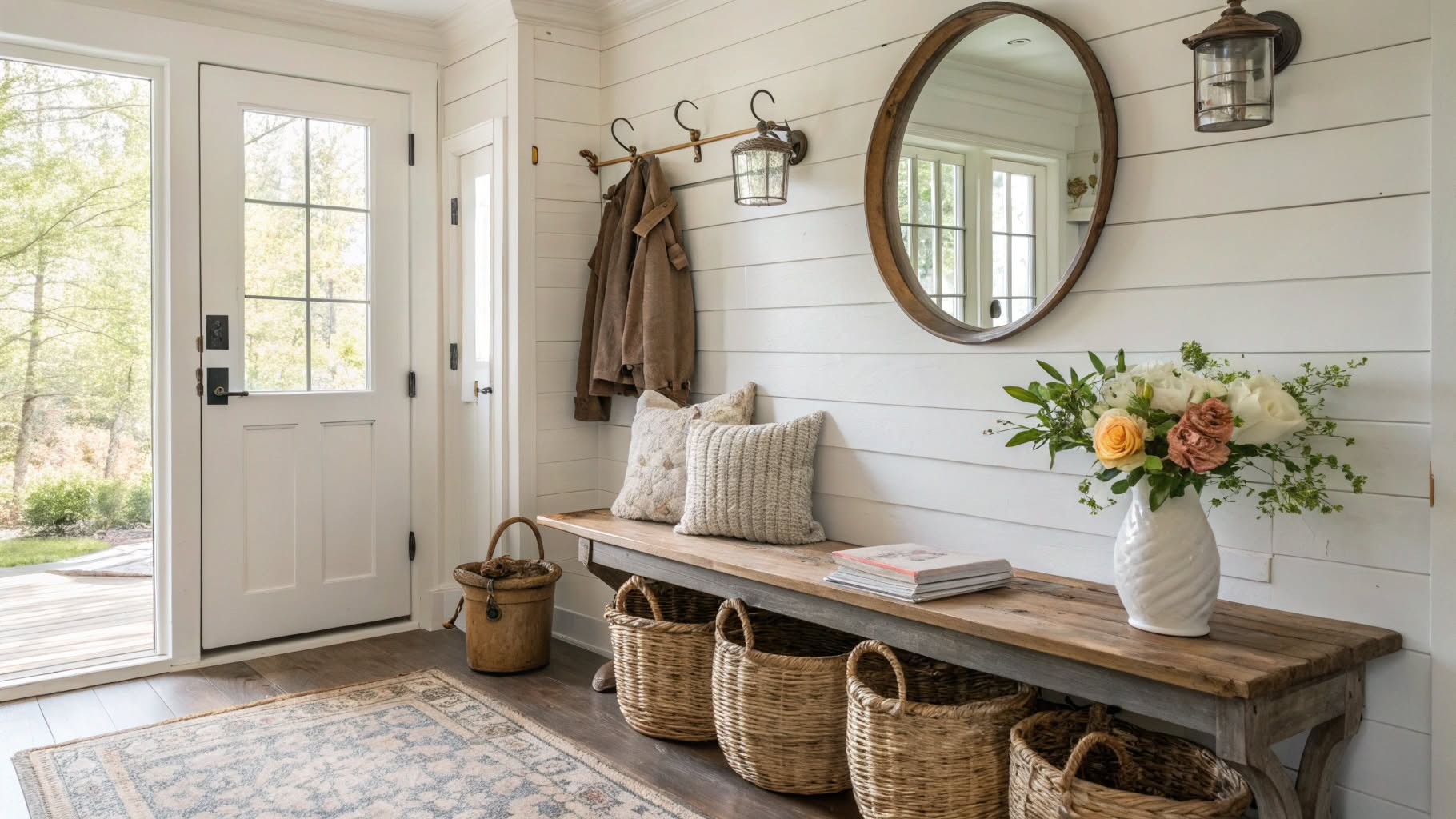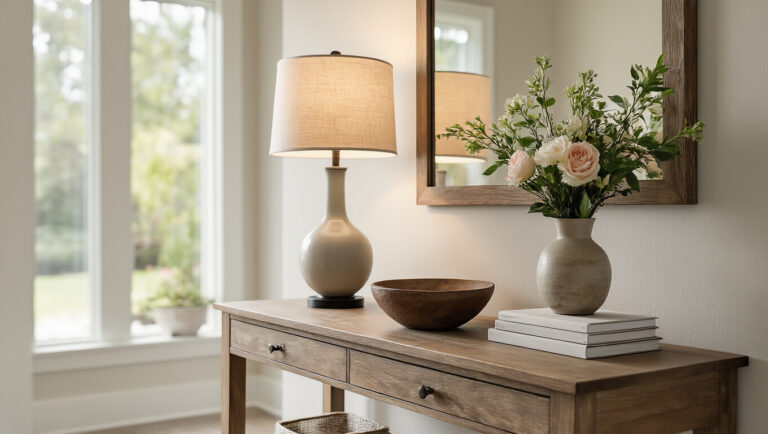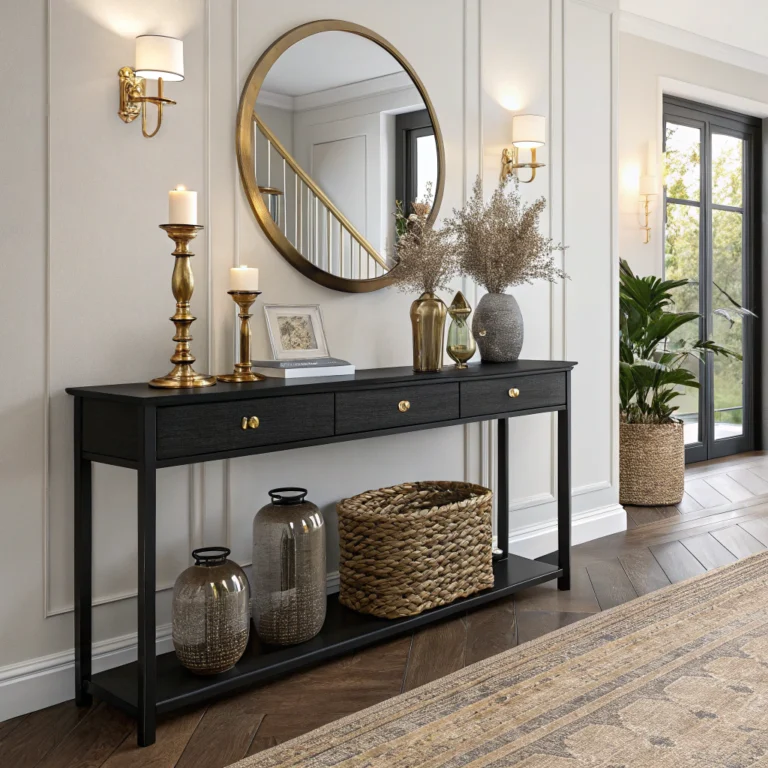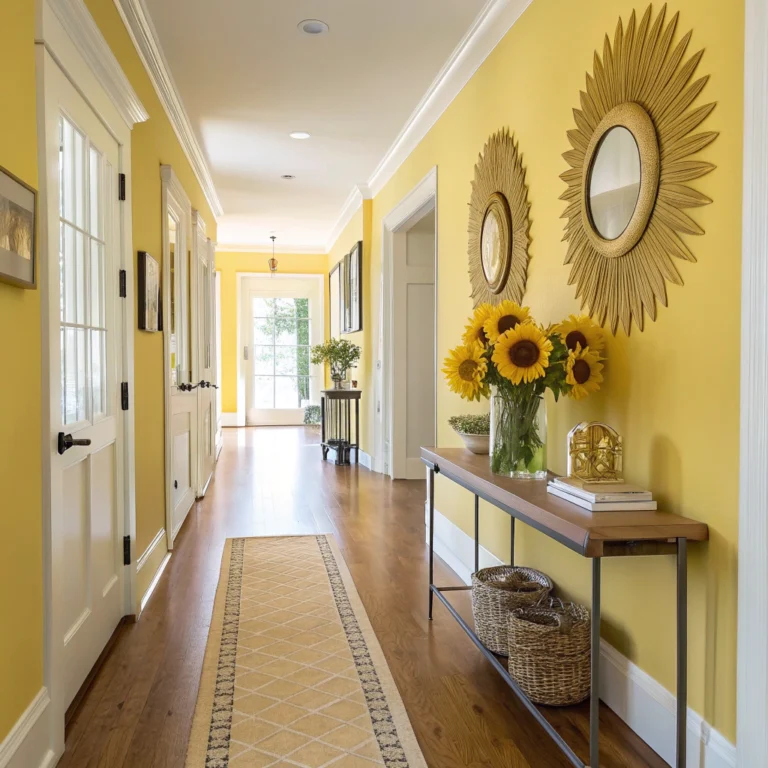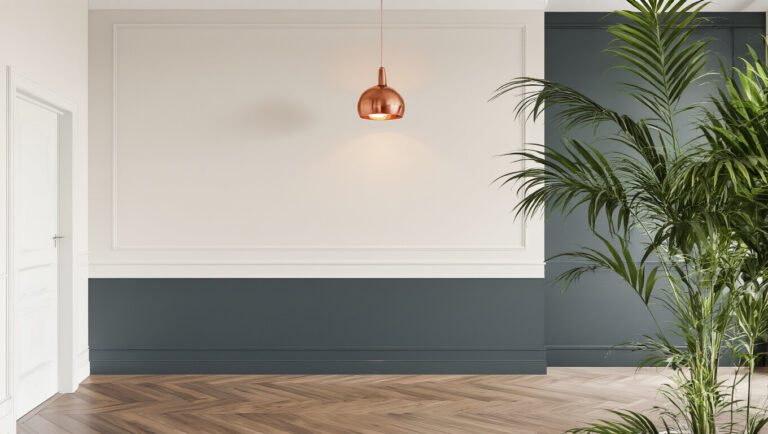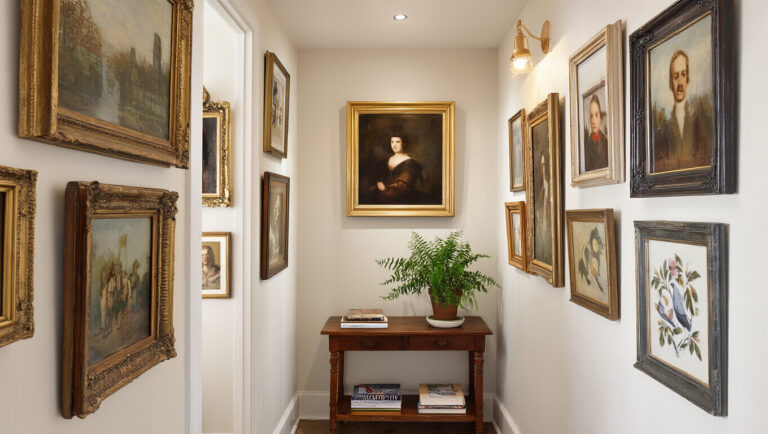Farmhouse Entryway Ideas Essential Hallway Decor
Your entryway sets the tone for your entire home, offering visitors their first glimpse of your personal style and creating that crucial first impression. In farmhouse-inspired homes, the entryway serves as more than just a transitional space—it becomes a warm, inviting threshold that embodies the cozy, rustic charm that makes this decorating style so beloved.
A well-designed farmhouse entryway balances both form and function, incorporating practical elements for everyday life while maintaining that distinctive rustic aesthetic that feels both timeless and on-trend. Whether you’re working with a spacious front hall or a compact entry nook, the right combination of furniture, textiles, lighting, and decorative accents can transform your entryway into a welcoming farmhouse haven.
In this guide, we’ll explore essential hallway decor ideas that capture the essence of farmhouse style—from vintage-inspired furnishings and natural textures to clever storage solutions and personalized touches—helping you create an entrance that’s not only beautiful but also perfectly suited to your family’s lifestyle and needs.
Creating a Welcoming Farmhouse Foundation
The heart of farmhouse style lies in its authentic, lived-in feel—a perfect balance of rustic charm and comfortable elegance. To establish this foundation in your entryway, start with the architectural elements and surfaces that will define the space. Shiplap walls, whether installed horizontally or vertically, instantly evoke farmhouse character and provide a textured backdrop for your decor. For a more subtle approach, consider beadboard wainscoting paired with warm neutral paint above. These wall treatments create visual interest while maintaining the clean, simple aesthetic that farmhouse style embodies.
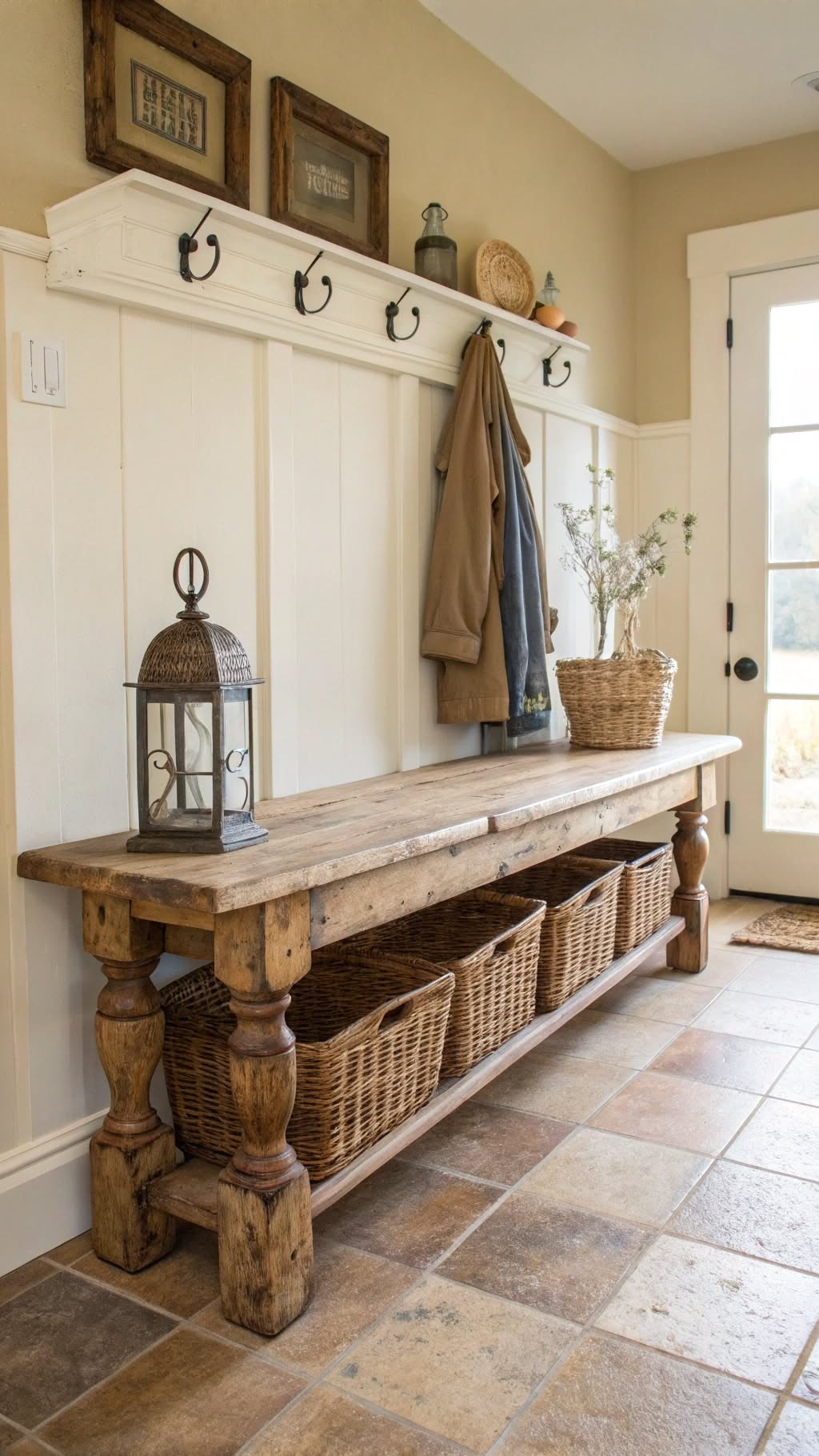
Flooring plays an equally important role in setting the tone for your farmhouse entryway. Reclaimed wood planks bring authentic history and character, complete with knots, nail holes, and a patina that can’t be replicated. If authentic reclaimed wood isn’t within reach, many manufacturers now offer engineered options that mimic the look with improved durability—a practical consideration for high-traffic entryways. For a classic farmhouse look, consider black and white checkerboard tile or hexagon patterns that recall vintage farmhouses. In larger spaces, layering a vintage-inspired runner over hardwood floors adds warmth, color, and protection. Look for patterns that incorporate faded colors and subtle distressing for that perfect blend of old and new that defines modern farmhouse style.
Lighting establishes both the mood and functionality of your entryway, with fixtures serving as statement pieces that anchor your design. A wrought iron or black metal chandelier with a candle-style design makes a striking impression in spaces with higher ceilings. For more modest ceiling heights, flush-mount fixtures with industrial or vintage-inspired details maintain the farmhouse aesthetic without overwhelming the space. Wall sconces flanking a mirror or console provide both ambient lighting and symmetrical visual appeal. When selecting lighting, prioritize warm-toned bulbs (2700K-3000K) that cast a cozy, welcoming glow rather than cool, harsh lighting that can feel sterile and unwelcoming. Remember that in farmhouse style, a touch of imperfection adds character—slightly tarnished metal, hand-blown glass with subtle variations, or gently weathered finishes all contribute to that collected-over-time feeling that makes farmhouse entryways feel so inviting.
Essential Furniture for Function and Style
The right furniture pieces transform an entryway from a simple pass-through space into a functional area that supports your daily comings and goings while reinforcing your farmhouse aesthetic. A bench serves as the anchor piece in many farmhouse entryways, offering a place to sit while putting on or removing shoes. Look for designs with weathered wood, X-brace details, or spindle backs that echo traditional farmhouse elements. For added functionality, choose benches with built-in storage underneath—either open shelving for frequently used shoes or hinged seats that conceal seasonal items. Complete the look with cushions in neutral linen or cotton ticking stripes, and add throw pillows in muted plaids or simple patterns that complement your color scheme.
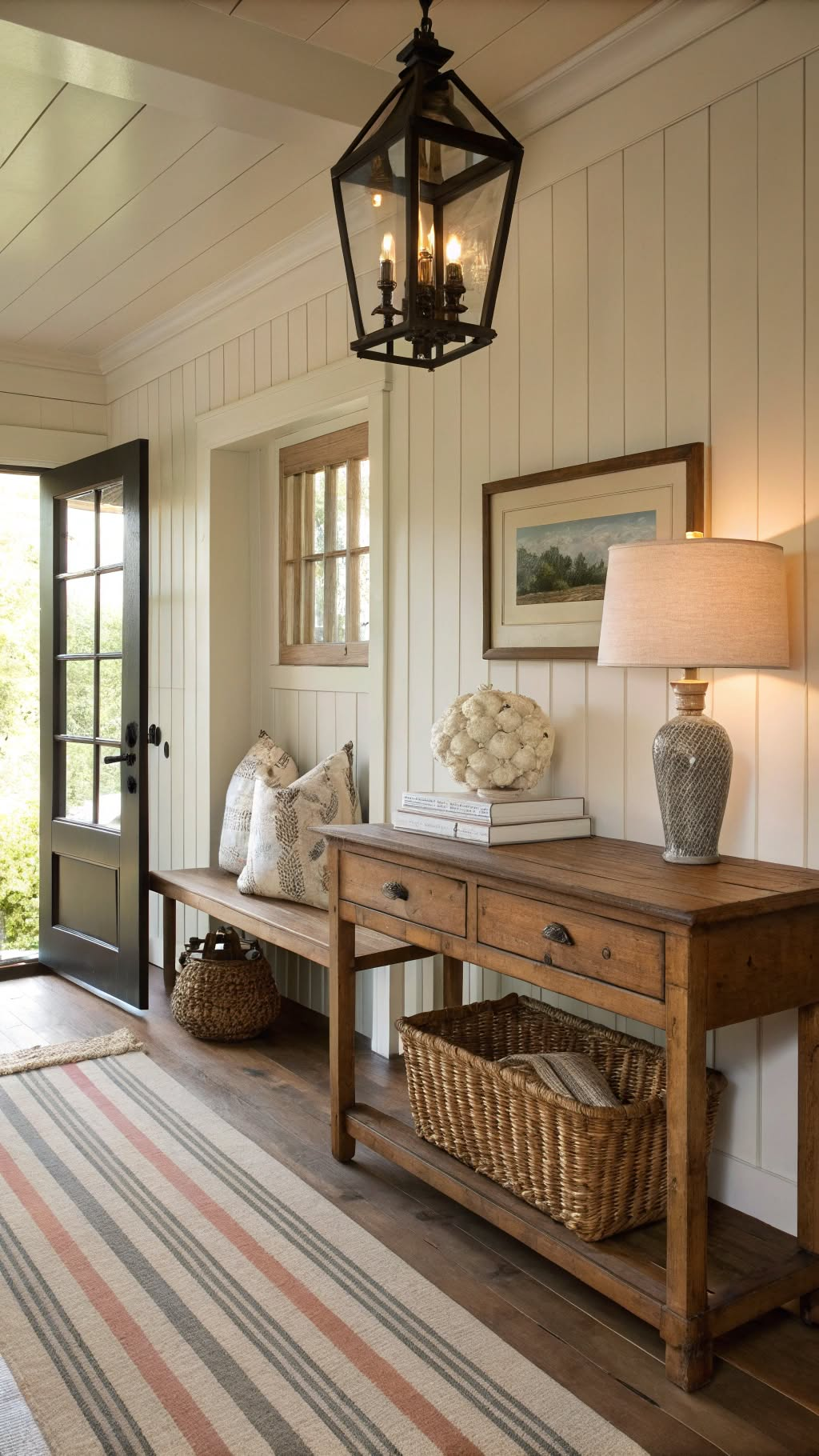
A console table provides both display space and storage in your farmhouse entryway, creating a focal point for decorative elements while offering a landing spot for everyday essentials. Traditional farmhouse tables often feature turned legs and distressed finishes that suggest years of loving use. For a more industrial-farmhouse approach, consider tables with metal bases and wooden tops that combine rustic and utilitarian elements. The space beneath your console creates additional storage opportunities—tuck matching baskets underneath to corral shoes, sports equipment, or pet supplies, maintaining order while adding textural interest. If space allows, incorporate a vintage dresser or cabinet instead of a traditional console, offering enclosed storage that keeps visual clutter at bay while showcasing the authentic, collected feel that makes farmhouse style so appealing.
No farmhouse entryway is complete without thoughtful wall-mounted elements that combine practicality with rustic charm. A coat rack or row of decorative hooks provides essential hanging space for jackets, bags, and hats, turning everyday items into part of your decor. Look for hooks mounted on reclaimed wood boards, vintage-inspired metal hooks with ceramic knobs, or repurposed architectural elements that add character. Above or alongside your hooks, incorporate a simple shelf for additional display space or seasonal decor. Wall-mounted cubbies or mail organizers help manage daily paper clutter while maintaining the farmhouse aesthetic—look for pieces with chicken wire fronts, distressed finishes, or simple wooden construction that echoes traditional farmhouse elements. Remember that in farmhouse style, furniture should feel collected rather than purchased as a matching set—mix new pieces with genuine vintage finds or well-chosen reproductions for an authentic, evolved-over-time appeal that defines the best farmhouse spaces.
Incorporating Natural Elements and Textures
The farmhouse aesthetic draws much of its warmth and character from natural materials and varied textures that reference rural living and agricultural traditions. Incorporating these elements into your entryway creates depth, visual interest, and that coveted connection to nature that makes farmhouse spaces feel so grounding and authentic. Begin with woven baskets—perhaps the most versatile and essential element in farmhouse decor. Use them to store shoes beneath benches, organize mail and keys on console tables, or display seasonal greenery. Look for variations in weave patterns, from tight, uniform designs to looser, more rustic constructions. Mix different shapes and sizes for an organic, collected look that adds both function and textural contrast against painted surfaces and wooden furniture.
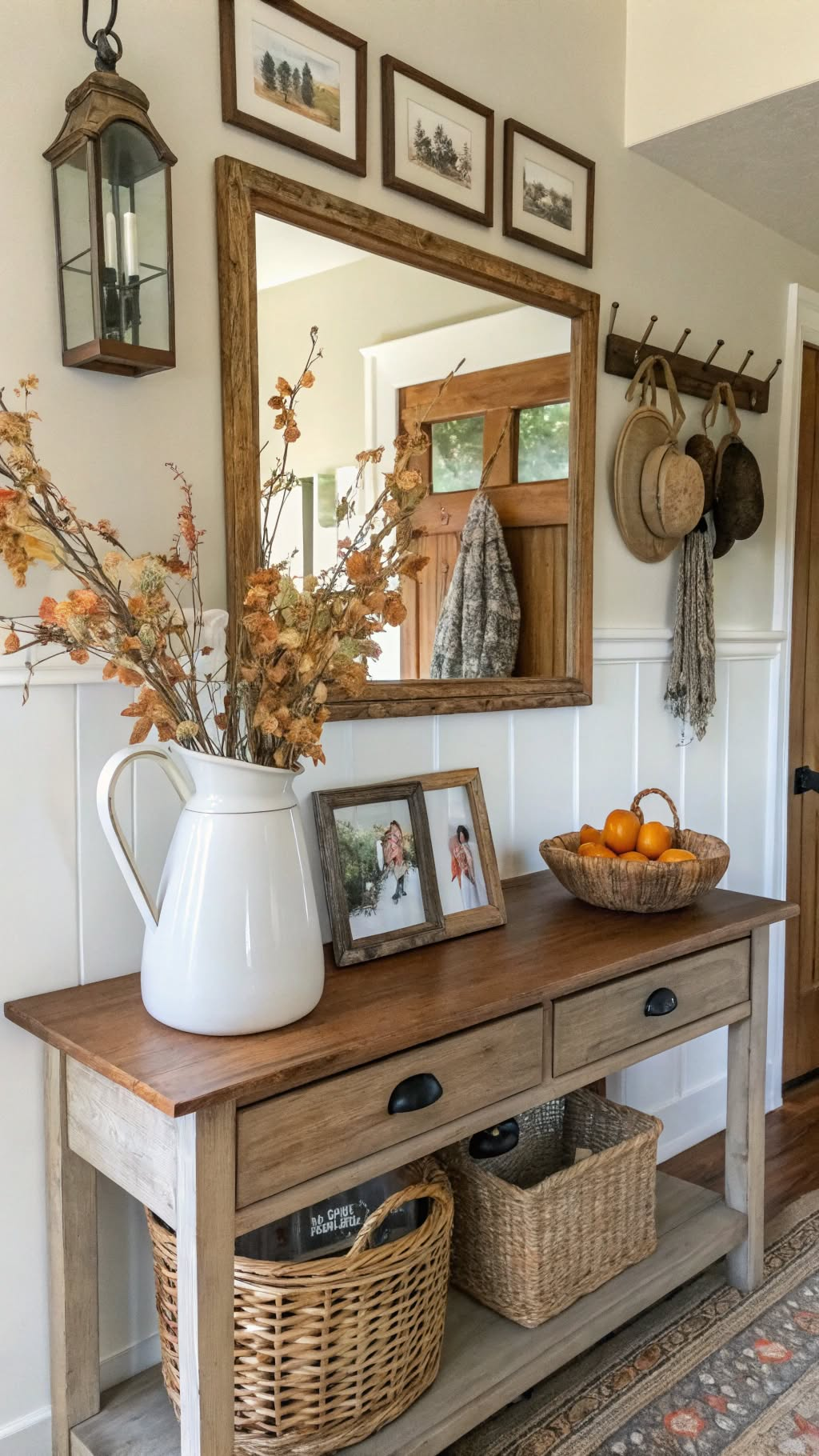
Textiles offer another opportunity to layer natural textures while adding softness to the harder surfaces typically found in entryways. A vintage-inspired runner in wool or cotton anchors the space while protecting flooring in this high-traffic area. Choose patterns with subtle fading and muted colors that won’t show dirt but still add visual interest. Cushions on benches benefit from durable, natural fabrics like cotton canvas, linen blends, or grain sack reproductions that reference traditional farm textiles. For added dimension, incorporate small touches of buffalo check, subtle plaids, or simple stripes that maintain the understated elegance of farmhouse style without becoming too themed or precious. Consider seasonal swaps for these textile elements—lighter materials and colors in spring and summer, with richer textures and deeper tones for fall and winter—to keep your entryway feeling fresh and responsive to the changing year.
No farmhouse space feels complete without the living elements that connect it to the agricultural roots of this decorating style. Greenery and botanical elements bring life, color, and a sense of the outdoors into your entryway. For low-maintenance options that still deliver impact, consider dried arrangements of wheat stalks, cotton stems, or preserved eucalyptus in crocks, pitchers, or galvanized buckets. For fresh options, potted herbs in simple terracotta pots bring fragrance and utility, while seasonal blooms in clear glass bottles or mason jars create casual arrangements that don’t feel fussy or formal. Larger entryways benefit from statement plants like fiddle leaf figs or olive trees in woven baskets or simple wooden planters. Even the smallest entry can accommodate a tiny seasonal wreath on an interior door or a small arrangement of branches in a vintage bottle. These natural elements should feel effortless and accessible—as if you’ve just gathered them from your garden or the surrounding countryside—maintaining the unpretentious charm that makes farmhouse style so enduringly appealing.
Vintage Touches and Personal Character
The most compelling farmhouse entryways balance contemporary function with vintage elements that tell a story and create emotional resonance. Unlike more formal decorating styles, farmhouse design embraces the character that comes from age, wear, and authentic history. Incorporating genuine vintage pieces—or thoughtfully chosen reproductions—adds depth and personality that can’t be achieved with all-new items. Mirrors serve both practical and aesthetic purposes in entryways, reflecting light and offering a last-minute check before heading out. Look for vintage frames with chippy paint, ornate details softened by age, or simple wooden frames with authentic patina. For a more architectural statement, consider repurposed window frames with mirror inserts that recall old farmhouses while creating the illusion of additional space and light.
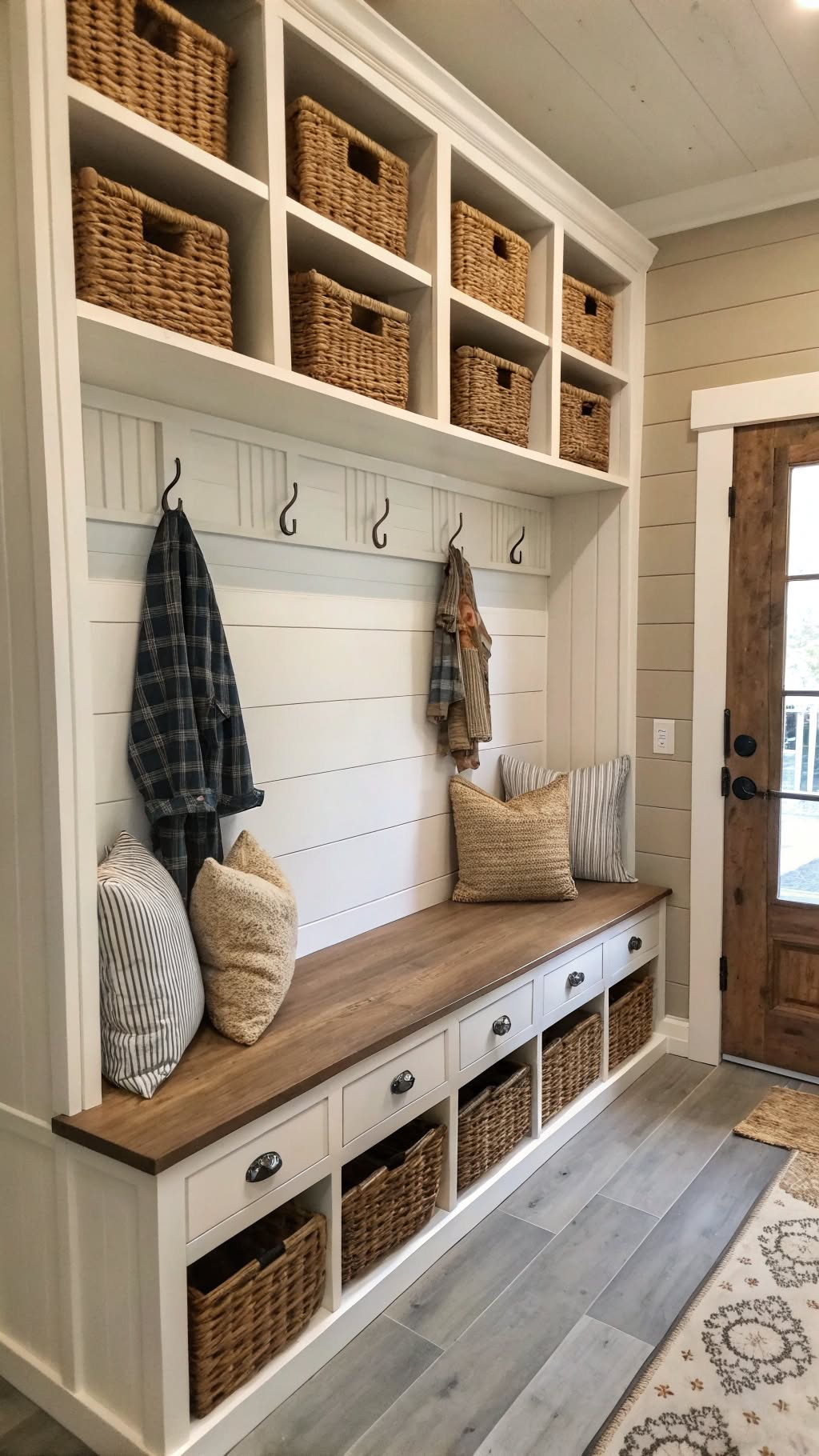
Wall decor in farmhouse entryways should feel collected and meaningful rather than mass-produced or generic. Vintage signs with faded lettering, antique botanical prints in simple frames, or architectural salvage like corbels or shutters all contribute authentic character. Family photographs in black and white, displayed in mismatched frames that share a common finish, add personal history without feeling cluttered. When incorporating wall decor, resist the urge to fill every space—the restraint of negative wall area creates breathing room that highlights your chosen pieces and maintains the clean, uncluttered feel that distinguishes sophisticated farmhouse style from more heavy-handed interpretations.
Small decorative objects and practical items with vintage appeal add the finishing touches that make a farmhouse entryway feel complete and lived-in. An antique wooden bowl for keys, a weathered ceramic crock holding umbrellas, or vintage glass bottles grouped on a console all contribute character without requiring major investment. Look for items with authentic age or well-executed reproductions that capture the essence of farmhouse style without feeling contrived. Incorporate seasonal elements that can be easily swapped—pinecones in winter, fresh flowers in spring, beach finds in summer—to keep your entryway feeling responsive to the passing year. Remember that in true farmhouse style, imperfection is not just accepted but celebrated—the crack in a ceramic pitcher, the worn edges of a wooden frame, or the tarnish on metal hardware all tell stories of use and history that give your space authentic character impossible to achieve with all-new items.
Seasonal Adaptations for Year-Round Charm
One of the joys of farmhouse style lies in its adaptability to seasonal changes, allowing your entryway to evolve throughout the year while maintaining its core aesthetic. This responsiveness to the seasons connects your home to the agricultural rhythms that inspired farmhouse design, creating a space that feels dynamic and alive rather than static. Creating a farmhouse entryway with a strong foundation of neutral elements—white shiplap, natural wood tones, black metal accents—provides the perfect backdrop for seasonal adjustments that won’t require major overhauls. Consider your entryway a canvas that can be refreshed with thoughtful touches that acknowledge the changing year without requiring significant investment or storage space.
Spring and summer call for lighter, brighter interpretations of farmhouse style that celebrate renewal and growth. Swap heavier winter textiles for lighter versions in fresh blues, soft greens, or faded florals that reference blooming gardens. Glass vessels filled with simple wildflower arrangements, potted herbs, or branches with fresh leaves bring the awakening outdoors inside. Lighter basket tones and natural elements like birds’ nests, collected shells, or botanical prints reinforce the connection to nature that defines farmhouse style. Consider a wreath of preserved boxwood or eucalyptus that offers longevity while maintaining the fresh, green aesthetic of the warmer months. Summer offers opportunities to incorporate elements from the garden—bundles of lavender hung to dry, bowls of collected pinecones or seed pods, or simple arrangements of whatever grows in your region.
As temperatures drop, farmhouse entryways transition beautifully to embrace the cozier aspects of this decorating style. Fall brings opportunities for deeper colors and richer textures—copper tones, burnt oranges, and deep greens that echo the changing landscape. Incorporate natural elements like dried wheat sheaves, mini pumpkins, or preserved oak leaves in simple arrangements that feel harvested rather than purchased. Winter calls for even more textural contrast—chunky knit throws draped over benches, baskets filled with pinecones or birch logs, and evergreen garlands that bring life to the dormant season. Battery-operated twinkle lights woven through greenery create welcoming warmth during darker months, while candle lanterns cast a cozy glow that enhances the inviting nature of your farmhouse entry. Throughout these seasonal shifts, maintain the restraint that characterizes sophisticated farmhouse style—a few well-chosen elements make more impact than overwhelming displays that can feel cluttered or themed. The goal is subtle acknowledgment of the season’s gifts rather than dramatic transformations that might compete with the timeless appeal of your farmhouse foundation.
Conclusion
Your farmhouse entryway represents more than just a transitional space—it’s the threshold between the outside world and your personal haven, setting the tone for your entire home. By thoughtfully combining functional elements with aesthetic touches that embody farmhouse charm, you create a welcoming space that serves your family’s daily needs while delighting visitors with its warmth and character. The best farmhouse entryways feel effortless and evolved, balancing rustic elements with refined details, mixing old with new, and incorporating personal touches that make the space uniquely yours. Remember that true farmhouse style celebrates imperfection, embraces patina, and honors the beauty of natural materials and honest craftsmanship. As you design your own farmhouse entryway, resist the urge to create a picture-perfect space that might feel contrived or difficult to maintain. Instead, focus on creating a functional, beautiful threshold that will gracefully weather the comings and goings of daily life, developing additional character with each passing season. Whether you’re working with a spacious front hall or a modest entry nook, the principles remain the same—thoughtful organization, layers of texture, meaningful decor, and that indefinable sense of welcome that makes farmhouse style so enduringly beloved. Take inspiration from these ideas, adapt them to your own space and needs, and enjoy the process of creating an entryway that not only looks beautiful but also truly feels like coming home.
